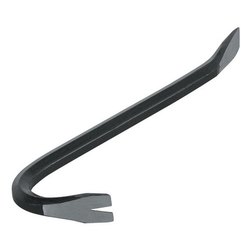Create an account / login to help track your progress and unlock more features including additional notes, rapid quizzes, revision questions, virtual library, and the new Esoma Classroom
Making Work Easier
Friction and Levers
Friction
- A force is a push or a pull. Friction is a type of a force.
- Friction is a force that opposes or resists motion. Friction force acts in the opposite direction of the applied force.
- Friction is measured in units called Newtons.
- The force of friction is measured using a spring balance(Newton metre).
- The factors affecting the force of friction include:
- Weight.
- Nature of the substance.
- Rolling or sliding friction.
Advantages of friction
- Erasing.
- Sharpening objects.
- Sawing.
- Washing.
- writing.
- Grinding.
- Walking.
- Scrubbing.
Disadvantages of friction
- Causes wear and tear in machine.
- Produces unwanted heat.
- Hinders work.
- More force is needed to overcome it.
- Produces unwanted noise.
- Increases cost of maintenance of machines.
- Reduces the efficiency of machines.
Ways of reducing friction
- Lubricating surfaces using lubricants such as oil and grease.
- Smoothening surfaces that are in contact.
- Streamlining bodies to make them be able to move smoothly and easily.
- Using rollers and ball bearings.
- Reducing the weight of the load.
Ways of increasing friction
- Friction can be increased by retreading of tyres. Treads make their surfaces rough, this
increases grip between the tyres and the load.
- Friction can also be increased by increasing the weight of the load.
Levers
- A lever is a simple machine that helps to make work easier. A lever has the position of load, fulcrum (pivot) and effort.
- The fulcrum is the turning point of the lever.
- The effort is the force applied to the lever in order to overcome the force of the load.
- The load is the force being overcome so as to ensure that work is done.
- Levers are grouped in three classes namely: firs, second and third class levers.
First class levers
- First class levers have the fulcrum in between the load and the effort.
- Examples include: lid opener, scissors, slaw hammers, pliers and nail cutter.

Second class levers
- Second class levers have the load in between the fulcrum and the effort.
- Examples include: wheelbarrow, nut cracker, garlic crusher, human foot and bottle opener.

Third class levers.
- Third class levers have the effort between the load and the fulcrum.
- Examples: fishing rod, elbow joint, forceps, tweezers, spade and tongs.

Hello Guest, Please help review these notes. Why review
Your review has been successfully submitted.
Tell us what you think about the notes.
We are sorry for this interruption.
Please create a MEMBERSHIP Account to continue reading
Why am I seeing this?
DISMISS MESSAGE



